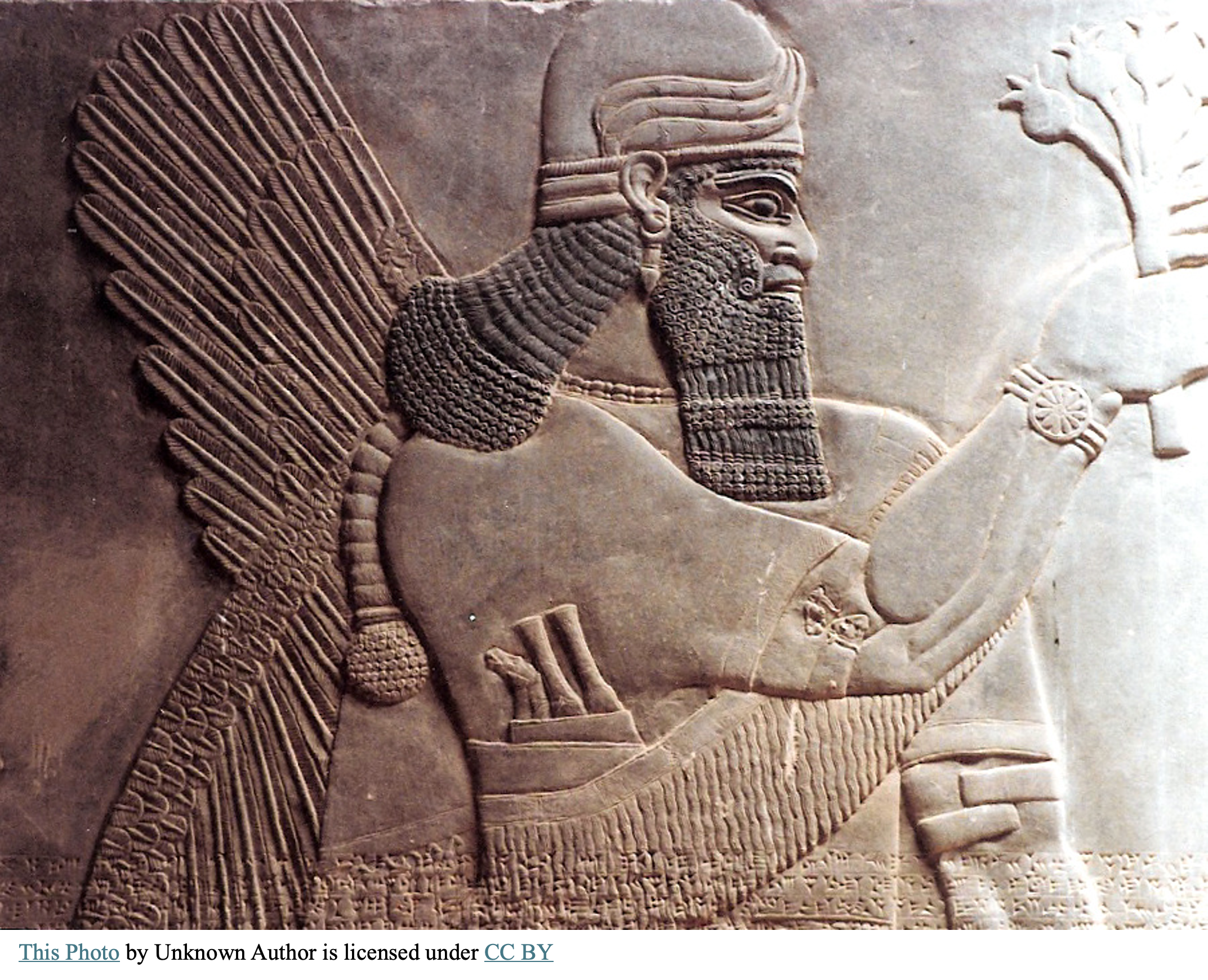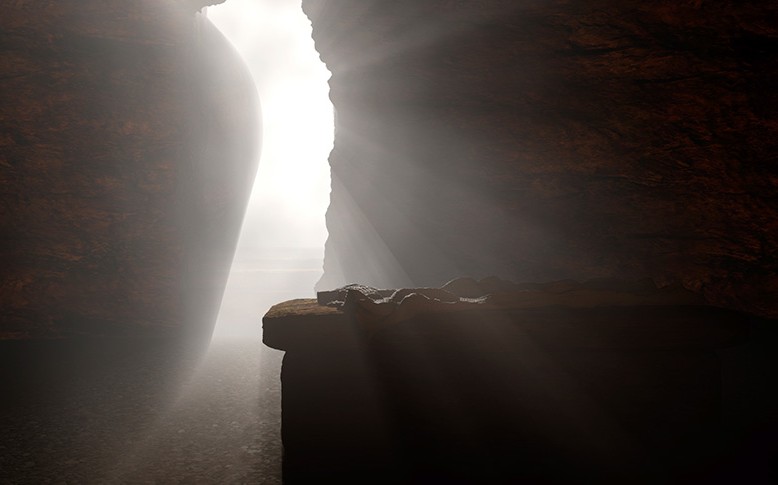By: Scott Reynolds, D.Min., Ph.D. | July 14, 2024
Archaeology has once again provided physical apologetic support to a miraculous account in the Tanakh. Many in the academic world question, if not dismiss, the miraculous accounts found in the Tanakh. Academia sees much of the miraculous as a way of Israel of building a history and working to demonstrate the “so-called” power of their God. In a recent discovery made by Stephen Compton and his team, one of those events finds archeological support.
The discovery by Steven Compton of a long-lost Assyrian military camp has great apologetic implications. “Stephen Compton, an independent scholar specializing in Near Eastern Archaeology, has utilized modern mapping techniques to locate what he believes to be the remnants of the Assyrian base described in 2 Kings 19:35, Isaish 37:36-38, and 2 Chronicles 32:21 where the Tanakh records the account of the ‘angel of the Lord’ miraculously striking down 185,000 Assyrian soldiers in one night as they besieged Jerusalem.”[1] Compton’s research, detailed in the June issue of the journal Near Eastern Archaeology, reveals significant findings that align with historical accounts of Sennacherib’s campaign.
How did Compton come to hypothesize that what he discovered connected to Hezekiah’s military victory? One significant piece of evidence comes from stone panels originally part of Sennacherib’s palace. These panels depict his military camp, fortified with 24 guard towers. Compton matched these depictions with early aerial photographs of Lachish, Israel, to create a virtual map pinpointing the camp’s location. “The image from the wall of Sennacherib’s palace is now on the wall of the British Museum, but it’s never been found,”[2] The work of Compton begins to put these pieces together. The location of the camp was verified by overlaying early 20th-century photographs with the landscape depicted in the Assyrian reliefs. Compton’s research indicates that the camp’s oval shape was consistent with Assyrian military structures. “We knew it was an oval. What I did was take the image of the relief and match it up with recognizable features in the landscape,” He also highlighted that the camp’s name, position, and dates fit the historical context of Sennacherib’s invasion.[3] The pieces Compton combined begin to form the physical parameters of the Biblical account.
The new discoveries are important because the ancient Assyrian inscription tells a different story, claiming that Hezekiah, the King of Judah, paid a large amount of tribute to the Assyrians to leave. Compton’s work on the locations of each encampment during Sennacherib’s military campaign.
Images of military conquest on Sennacherib’s palace walls often featured his siege camps. By comparing the visual and textual references to these camps with the surroundings of the cities he besieged (on site and via aerial and satellite imagery, archaeological and historical data, and early maps and surveys), likely locations are proposed for Sennacherib’s royal camps. These sites are found to have all had the same name on early maps, Mudawwara, which, in Arabic in the Middle Ages, denoted the enormous tent that housed the sultan on military expeditions. (At times, this name was prefaced with Khirbet al, indicating the ancient stone ruins thereof.) Examining all occurrences of this toponym within Judah and Philistia reveals a distribution consistent with what is known of Sennacherib’s invasion route and of the cities besieged.[4]
The route, the locations of Sennacherib’s encampments, and the corresponding implications have found mixed reviews in the academic community.
The idea that the Khirbet al Mudawwara site at Lachish is an Assyrian camp is plausible. “The case of Lachish is the most interesting,” Israel Finkelstein, a professor emeritus of archaeology at Tel Aviv University, told Live Science in an email. The “next thing to do is to check the suspected site in the field,” Finkelstein said.
Eckart Frahm, a professor of Assyriology at Yale University, said that it’s possible that Khirbet al Mudawwara was an Assyrian siege camp.
Others are doubtful, however. David Ussishkin, a professor emeritus of archaeology at Tel Aviv University who has conducted extensive work at Lachish, told Live Science he thinks the siege camp was to the southwest of Lachish.
Meanwhile, the idea of Jebel el Mudawwara as the siege camp for Jerusalem got a negative response. Frahm said Assyrian inscriptions suggest that while Sennacherib blockaded Jerusalem, he didn’t try to take it by storming it or through the use of siege engines. Assyrian inscriptions say Sennacherib built “fortified structures” to blockade Jerusalem rather than to construct a single camp, Frahm said.
Frahm also disagreed with the meaning of the Arabic word “mudawwara,” saying it doesn’t necessarily refer to a place where a sultan would place their tent. “The basic meaning of Arabic ‘mudawwara,’ if I am not very much mistaken, is ’round place’ — and in my view, the many different al-Mudawwaras discussed by the author all simply indicate the roundness of the structure the term describes,” Frahm said.
The sources noted that further investigations will be needed. Mordechai Cogan, professor emeritus of biblical history at the Hebrew University of Jerusalem, told Live Science that the landscape where the sites are located may make them ideal for Assyrian military encampments but also said that new archaeological excavations are necessary.[5]
So, what was found, and what were the apologetic implications? Compton found evidence of Assyrian encampment in line with the Biblical text. The new information contradicts previous assumptions about the information known about Sennacherib’s military campaign. The Assyrians would not have recorded their defeat at the hands of an enemy. Therefore, the recent discovery does not communicate the events of the battle. Since the victors write the accounts of the battle. However, if the new information can contradict the previous conclusions and now place the physical event in line with the Biblical account, then we can conclude the event now has a higher probability of being factual.
From a neutral position of science, Stephen Compton has worked his discoveries to their natural conclusions. Academia is mixed in their reception of the latest discoveries as it contradicts the previous conclusions formulated by others in these fields. Ultimately, the latest evidence supports the Biblical account recorded by the victors of the battle.
About the Author:
Scott Reynolds, D.Min., Ph.D.: Contributor

Dr. Scott Reynolds earned his Ph.D. in Theology and Apologetics from Liberty University and his D.Min from New Orleans Baptist Theological Seminary. In addition to his doctoral accomplishments, he earned degrees from Troy University. Dr. Reynolds has traveled the world and has served as an archaeologist with some of the biggest names in the field. He brings a passion for biblical studies, biblical history, and an expertise in archaeological studies. Dr. Reynolds is a retired pastor and church planter. He has taught at New Orleans Baptist Theological Seminary and now is now working archaeological digs in a pursuit of discovering the apologetic properties of archaeology. Scott and his wife Lori have two grown children, one granddaughter and a very spoiled dog.
Notes:
[1] Dario Radley, “Assyrian Military Camp Found, Potentially Supporting Biblical Account of Angels Killing 185,000 Soldiers,” Archaeology News, June 2024.
[2] “Lost Assyrian Camp Uncovered: Could It Prove the Biblical Siege of Jerusalem?,” The Jerusalem Post, June 2024.
[3] “Lost Assyrian Camp Uncovered: Could It Prove the Biblical Siege of Jerusalem?”
[4] Stephen Compton, “The Trail of Sennacherib’s Siege Camps,” Near Eastern Archaeology 87, no. 2 (2024).
[5] Owen Jarus, “Long-Lost Assyrian Military Camp Devastated by ‘the Angel of the Lord’ Finally Found, Scientist Claims,” Live Science, June 2024.
Other Articles by the Author:





